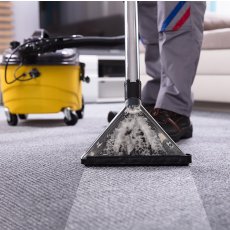Cleaning services is a non-profit organization whose mission is to use science-based programs to empower consumers, purchasers, and companies to create a more sustainable world. Cleaning services sets leadership standards that aim to reduce, to the extent technologically and economically feasible, the environmental, health, and social impacts throughout the life- cycle of products, services, and companies. The standards may be used for conformity assessment, purchaser specifications, and public education.
Residential cleaning services
Cleaning services offers certification of products, services, and companies in conformance with its standards. For additional information on Cleaning services or any of its programs, contact:
STANDARD FOR RESIDENTIAL CLEANING SERVICES
TABLE OF CONTENTS
FOREWORD
General. The final issued standard was developed in an open and transparent process with stakeholder input that included producers, users, and general interests.
The requirements in the standard are based on an assessment of the environmental, health, or social impacts associated with the products, services, or organizations covered in the scope of the standard. The requirements included in the standard are subject to revision. Provisions for safety have not been included in this standard. This standard neither modifies nor supersedes laws and regulations. Compliance with this Standard is not a substitute for, and does not assure, compliance with any applicable law or regulations. Compliance with all applicable laws and regulations is a required prerequisite for the provision of and marketing of the cleaning service. This standard (and any corresponding conformity assessment) presumes compliance with all applicable laws and regulations.
Products, services, or organizations that are substantially similar to those covered by this standard in terms of function and life cycle considerations may be evaluated against the intent of the requirements of this standard, accounting for relevant differences between the intended scope of the Standard and the actual product, service, or organization to be evaluated.
This standard may not anticipate features of the service that may significantly, and undesirably, increase its impact on the environment, health, or society. In such a situation, Cleaning services will ordinarily amend its standards to account for the unanticipated environmental, health, and societal impacts.
Normative references (e.g., other standards) in this standard intend to refer to the most recent edition of the normative reference.
Disclaimer of Liability. Green SealTM, as the developer of this standard, shall not incur any obligations or liability for any loss or damages, including, without limitation, indirect, consequential, special, or incidental damages arising out of or in connection with the interpretation or adoption of, reliance upon, or any other use of this Standard by any party. Cleaning services makes no express or implied warranty of merchantability or fitness for a particular purpose, nor any other express or implied warranty with respect to this Standard.
Tests may be required by the standard that involve safety considerations. Adequate safeguards for personnel and property should be employed in conducting such tests.
STANDARD FOR RESIDENTIAL CLEANING SERVICES
SCOPE
This standard establishes criteria for professional cleaning services of residential facilities, areas, or spaces. Specialized cleaning services are not included in this standard, such as restorative/deep carpet cleaning, upholstery cleaning, or mold remediation services. Cleaning services for commercial or institutional buildings, those where the individual residents are not responsible for the cleaning of the residential area (or living space), are not included in this standard, but residential portions of these buildings may be included when the individual residents are responsible for the cleaning of the residential area (or living space). See Appendix 1 for an example list of services included in this standard.
This standard assumes compliance with all applicable laws and regulations. As a result, in order to be certified to this standard, the service provider must disclose all governmental allegations or determinations of violation of federal, state, or local laws or regulations with respect to its business. Certification shall be denied any service provider in violation of laws or regulations if, in the certifier’s judgment, such violations indicate that the impacts of the service significantly exceed those contemplated in the setting of the standard.
Words and phrases described in the standard that appear in italics have a corresponding definition located in the definition section of the standard, Annex A.
OPERATIONAL ENVIRONMENTAL AND HEALTH REQUIREMENTS
Standard Operating Procedures. Residential cleaning service providers shall have written guidelines that define the general standard operating procedures. These guidelines shall be made available to all cleaning personnel, and clients upon request, and shall include the following elements:
Environmentally preferable cleaning tools (e.g., cloths, mops heads and other equipment)
Inspection and maintenance program of all cleaning tools, supplies, and equipment
Environmentally preferable cleaning products
Cleaning procedures
Identification and cleaning procedures for areas that require
disinfection or sanitizing
Identification and cleaning procedures for areas requiring special cleaning (e.g., entryways, nurseries, low ventilation areas)
Vulnerable population management
Accident management and safety procedures per/ in compliance with Occupational Safety and Health Administration (OSHA) and state regulations
Chemical storage, handling, use, and disposal
Waste reduction, handling, and disposal
Water conservation and use policy.
Service quality standards/expectations (especially for cleaning efficacy) and quality control
Training requirements of staff
Communication polices for staff and clients
Professionalism and code of conduct of staff
Cleaning Tools and Equipment.
Maintenance. All cleaning tools and equipment shall be cleaned and maintained in accordance with the manufacturer’s recommendations.
Durable Tools. Microfiber mop heads, cloths and dusters, or other durable and reusable products, shall be used for all feasible residential cleaning purposes. The service provider may use alternate tools for specialized cleaning functions (e.g., chandelier cleaning, oven cleaning), when evidence is provided for necessity of the alternate tool.
Cross Contamination.
Coding. An understandable coding system for cleaning cloths, mop heads, and tools shall be in place in order to prevent cross contamination (e.g., color coding).
Cleaning Tools.
Cleaning cloths, mop heads, and related tools that contact restroom and kitchen surfaces shall not be used to clean any other areas.
Clean and sanitize cleaning cloths, mop heads, vacuum floor attachments, and related tools that had contact with restroom, kitchen, and high touch contact (including, but not limited to, doorknobs, light switch plates, telephone handsets) surfaces prior to use in another residence.
Powered Equipment. The cleaning service provider shall have all of its equipment meet the following at the time of certification:
Powered floor maintenance equipment, including vacuum cleaners, shall be equipped with controls or other devices for capturing and collecting particulates and shall operate at a sound level less than 70 dBA.
Vacuum cleaners shall be equipped with the appropriate filter or bag and these shall be changed or cleaned as per the manufacturers recommendations.
Precautions shall be taken to limit worker and vulnerable population exposure to dust and particulate matter when cleaning and replacing bags and filters.
Vacuum cleaners shall meet, at a minimum, the Carpet and Rug Institute Green Label Program requirements, or equivalent.
Cleaning Products and Supplies.
Environmentally Preferable Products. The residential cleaning service provider shall purchase and use only environmentally preferable products for at least the following:
General-purpose cleaners
Glass cleaners
Restroom cleaners
Bowl cleaners
Degreasers
Floor cleaners
Floor finishes and floor strippers
Carpet spot cleaners
Sanitary paper products: toilet tissue, facial tissue, paper towels, and napkins, when provided by the cleaning service
Trash Can Liners. The residential cleaning service provider shall purchase and use only plastic trash can liners, when provided by the cleaning service, that contain a minimum of 10% post-consumer recycled content.
Specific Cleaning Procedure Requirements.
Order. Perform floor cleaning toward the doorway; perform dry cleaning tasks prior to wet cleaning tasks for a surface; and in sloping areas, perform floor cleaning from high to low, towards the doorway.
Disinfection. Use disinfectants only where required in this standard and where identified according to standard operating procedures. Perform disinfection in areas or on surfaces where pathogens can collect and breed such as, but not limited to, restrooms. Perform disinfection using only U.S. Environmental Protection Agency (EPA)-registered disinfectants or EPA-registered disinfection devices. When using chemical disinfectants or cleaner/disinfectants, follow product label directions for preparation of disinfecting solutions (e.g., dilution rate), and the appropriate disinfecting and cleaning method for the area to be cleaned (e.g., dwell time and whether pre-cleaning is required).
Moisture Control. Control and remove standing moisture from floor and restroom surfaces in a timely manner.
Restrooms:
Disinfect surfaces touched by hands (e.g., door knobs, light switches, handles, etc.) and trash receptacles.
Floors and Carpet:
Vacuum floors and carpet to remove particulates.
Ensure entryways are cleaned to prevent migration of contaminants into the residence.
Kitchens:
Clean and sanitize surfaces in food preparation and consumption areas.
Clean and sanitize surfaces touched by hands (e.g., faucet handles, knobs, etc.) and waste containers that are used for food waste.
Clean all exposed appliances in the kitchen.
Vulnerable Populations. The cleaning service provider, in consultation with the client, shall identify whether a member of vulnerable populations reside in the residential dwelling being cleaned. In situations where cleaning operations have the potential to adversely affect an identified member of a vulnerable population, the cleaning service provider shall document identification of vulnerable population needs and the approaches taken to address such needs, such as, but not limited to:
Adopt alternative cleaning practices that minimize or make unnecessary the use of cleaning chemicals.
Use cleaning chemicals in areas only where sufficient ventilation is present to allow chemicals to dissipate before the area becomes repopulated. If available, provide additional ventilation to enhance the rate of chemical dissipation.
Clean in a manner that prevents the transfer of impacts to other areas of the residential dwelling that may contain vulnerable populations.
Accident Management. The service provider shall comply with OSHA requirements. Documentation shall be provided to demonstrate that, the cleaning service provider has an appropriate policy governing the procedures to be followed in case of an accident. Accident report forms shall be kept with the cleaning crew and shall be readily accessible to all staff. A basic first aid kit shall be provided for each cleaning crew.
Chemical Storage, Handling, Use and Disposal and Waste Requirements.
Safety Data Sheets. Ensure a current Safety Data Sheets (SDSs) are available for each product in use. Provide product SDSs in a timely manner upon request by client.
Storage. Store chemicals according to their classification, in areas with proper ventilation, adequate security, and proper management of the area.
Reduction. Reduce, minimize, or eliminate the need for using cleaning chemicals wherever possible. Use the appropriate technology (coarse spray bottles, automatic chemical dispensers on powered equipment, etc.) for applying the chemical product in a manner that does not result in overuse, over application, and waste of the product. Ensure proper use dilution of products.
Concentrates. Purchase and use cleaning products and other supplies in concentrated quantities, with appropriate equipment, to minimize the amount of packaging waste generated, to the maximum extent feasible. When using concentrated cleaning products, dispense them using measuring and dilution control systems to ensure safe and proper dilution.
Tracking. Track the quantities of cleaning products and other materials consumed on at least a quarterly basis.
Used Containers. Provide instructions on cleaning, dispensing, rinsing, and re-use or recycling of used empty chemical containers and applicators.
Recycling. Recycle applicable waste (e.g., plastic containers) and properly dispose other materials either off-site of client’s property or at the client’s property.
Minimize Evaporation. Whenever feasible, use a practical method to minimize evaporation of cleaning product from all cleaning towels, cloths, and materials (e.g., rinse, place in sealed container until laundering). Reusable cleaning cloths or microfiber must be cleaned or laundered prior to reuse.
Water Use. A policy governing efficient use of water in cleaning operations shall be in place.
QUALITY CONTROL REQUIREMENTS
All services shall conduct quality control assessments at least quarterly to evaluate the effectiveness of the cleaning service, which includes feedback and continuous improvement of standard operating procedures/training. The assessments shall be conducted at a frequency and method appropriate for the type of cleaning conducted (e.g., unannounced staff inspections during cleaning, customer surveys).
The cleaning service provider shall provide appropriate documentation on assessments of cleaning efficacy.
TRAINING REQUIREMENTS
Initial Training. Upon hiring, all cleaning personnel are required to undergo initial training before personnel is assigned to clean independently on at least the following:
Standard operating procedures, including the proper cleaning procedures and proper handling of chemicals.
Safety, including the use of personal protective equipment, special considerations for any hazardous chemicals used, spill containment, handling of potentially hazardous materials (e.g., such as the maintenance of floors containing asbestos, compliance with OSHA Bloodborne Pathogens Standards), an overview of SDS information, and reducing and preventing ergonomic injuries.
Ongoing Training. All owners, managers, and employees shall receive 8 hours of continuing training and/or education on an annual basis to maintain knowledge of the standard operating procedures, such as, but not limited to, the correct procedures for safety, tools, techniques, and procedures.
Records of Training. Records of training shall be maintained on each employee for all training specified within this standard. The documentation shall include topics of what was included in the training, a general outline of information covered, the name and qualification of the trainer, and the date(s) and duration of the training or courses. For current employees, the last two years of records shall be retained as well as records of their new hire training. These records shall be retained for one year after termination or resignation for former employees.
COMMUNICATION REQUIREMENTS
Company Commitment. The cleaning service provider’s company strategic plan shall formally adopt a written commitment to the environmentally and socially responsible practices included in this standard. The cleaning service provider shall have an environmental and social responsibility plan that includes goals and an action plan related to the criteria of this standard, with continual improvement, that is updated annually. This plan shall be available to all employees.
Employee Feedback. The cleaning service providers shall ensure that a system is in place for cleaning service employees to provide comments and suggestions about workplace issues and suggestions for improvements in the provision of services.
Client Communication. The cleaning service providers shall:
Communicate to the client the presence of pests and any maintenance issues discovered while performing cleaning operations.
Provide materials to clients that define opportunities to reduce the need for more intensive cleaning processes or treatments (e.g., making attempts to reduce clutter in personal spaces, performing interim cleaning between visits from the cleaning service provider).
Provide the client with a contact person available to provide information about products used and to receive comments about services rendered.
CERTIFICATION AND LABELING REQUIREMENTS
Claims about certification (e.g., logos) to this standard may appear in advertising materials of a residential cleaning service provider. Wherever the service provider makes a claim that it has been certified (or other equivalent term) to this standard, it shall be based on a third-party certification program with an on-site audit and state, unless otherwise approved in writing by Green Seal:
"This cleaning service meets the criteria of the Green SealTM Standard for Residential Cleaning Services, GS-49, for reduced toxicity, waste, and exposure."
For use at residential dwelling, unless otherwise approved in writing by Green Seal, the description shall read as follows:
“This residential dwelling is cleaned by a service that meets the criteria of the Green SealTM Standard for Residential Cleaning Services, GS-49, for reduced toxicity, waste, and exposure”
ANNEX A – Normative
Definitions of Terms
(note that the defined terms are italicized throughout the standard)
Cleaning Tool. All powered and non-powered cleaning equipment and supplies used for cleaning common surfaces in residential facilities.
Client. The residential household or entity contracting for the professional services of a
residential cleaning service provider.
Disinfect. A process for hard inanimate surfaces undertaken to destroy or irreversibly inactivate infectious fungi and bacteria, but not necessarily their spores. Disinfection is performed using only EPA-registered disinfectants or EPA-registered disinfection devices.
Environmentally Preferable Product. Environmentally preferable is defined in Section 201 of US Executive Order 13101 to mean products or services that "have a lesser or reduced effect on human health and the environment when compared with competing products or services that serve the same purpose. This comparison may consider raw materials acquisition, production, manufacturing, packaging, distribution, reuse, operation, maintenance or disposal of the product or service." Products shall be certified as environmentally preferable by third-party certification programs, when such certifications exist for a product category. The following hierarchy applies (see Appendix 2 for examples of programs that may fit under each tier):
Tier 1. Leadership-level, multi-attribute, life-cycle-based (International Organization for Standardization (ISO) 14024) standards certified by third party certification programs with on-site audits and periodic monitoring. If, and only if, such programs do not exist for the product category under consideration, move to Tier 2 below.
Tier 2. Multi-attribute, life-cycle-based standards where compliance is self-declared. If, and only if, Tier 1 and 2 programs do not exist for the product category under consideration, move to Tier 3 below.
Tier 3. Single-attribute or non-life-cycle-based standards certified by a third party, including on-site audits and periodic monitoring. If, and only if, Tier 1, 2 and 3 programs do not exist for the product category under consideration, move to Tier 4 below.
Tier 4. Single-attribute or non-life-cycle-based standards where compliance is self- declared.
Microfiber. A product specifically designed for cleaning made from synthetic fibers that measure less than one denier. The most common type of microfiber for cleaning is a splittable bicomponent filament made from a combination of polyester and polyamide (nylon).
Product. A broad term covering both goods, which are physical objects, and services.
Residence. Any property that is a single family home, apartment, dwelling, co-operative, townhouse, and any other place where people live. May also be referred to as residential facility, space, or area. For the purposes of this standard, residences include those in which the residents are responsible for the cleaning to be done. Commercial or institutional buildings where the residents are not responsible for the cleaning to be done for the residential area are not included.
Residential Cleaning Service Provider.
A professional cleaning business organization that is legally recognized by a governmental body and employs individuals and provides cleaning services to residential facilities, spaces, or areas, such as, but not limited to, residences like homes.
Sanitize. A process intended to reduce, but not necessarily eliminate, microorganisms from the inanimate environment to levels considered safe as determined by public health codes or regulations.
Third-Party Certification Program.
A program without any financial interest or stake in the sales of the product or service being certified, or other conflict of interest. There must be a standard to base the certification upon and the standard must be appropriate and meaningful for its intended purpose. The standard must be publically available and developed with stakeholder input. Certification to the standard must be completed by an independent party (e.g., not the manufacturer of the product being certified), include site inspections, where applicable, and have a monitoring program to verify ongoing compliance.
Vulnerable Population. People and companion animals who are more susceptible than the general population to chemicals and products that might pose a risk to their health. These populations include but are not limited to children, pregnant women, the elderly and infirm, people sensitive to chemical exposures (e.g., fragrances), companion animals (e.g. pets, assistance animals, therapy animals), and others that may have a higher susceptibility to cleaning operations.
APPENDIX 1 – Informative
Services that clean residential properties or areas.
Specialty cleaning services such as deep/restorative carpet cleaning, window washing, upholstery cleaning, or mold remediation services.
Cleaning services for commercial or institutional buildings.
Hotels, assisted living, hospitals, and similar properties where the residential areas and common/public space are typically cleaned by in-house or contract service providers
Dormitory, apartment, and similar properties’ common/public areas.
APPENDIX 2 - Informative
Non-Exclusive List of Third-Party Certification Programs.
This list is not exhaustive and is intended only to provide examples of the types of programs that may qualify. Note: URLs may be out of date and do not reflect on any requirements of the Standard.








 Vectora Design
Vectora Design